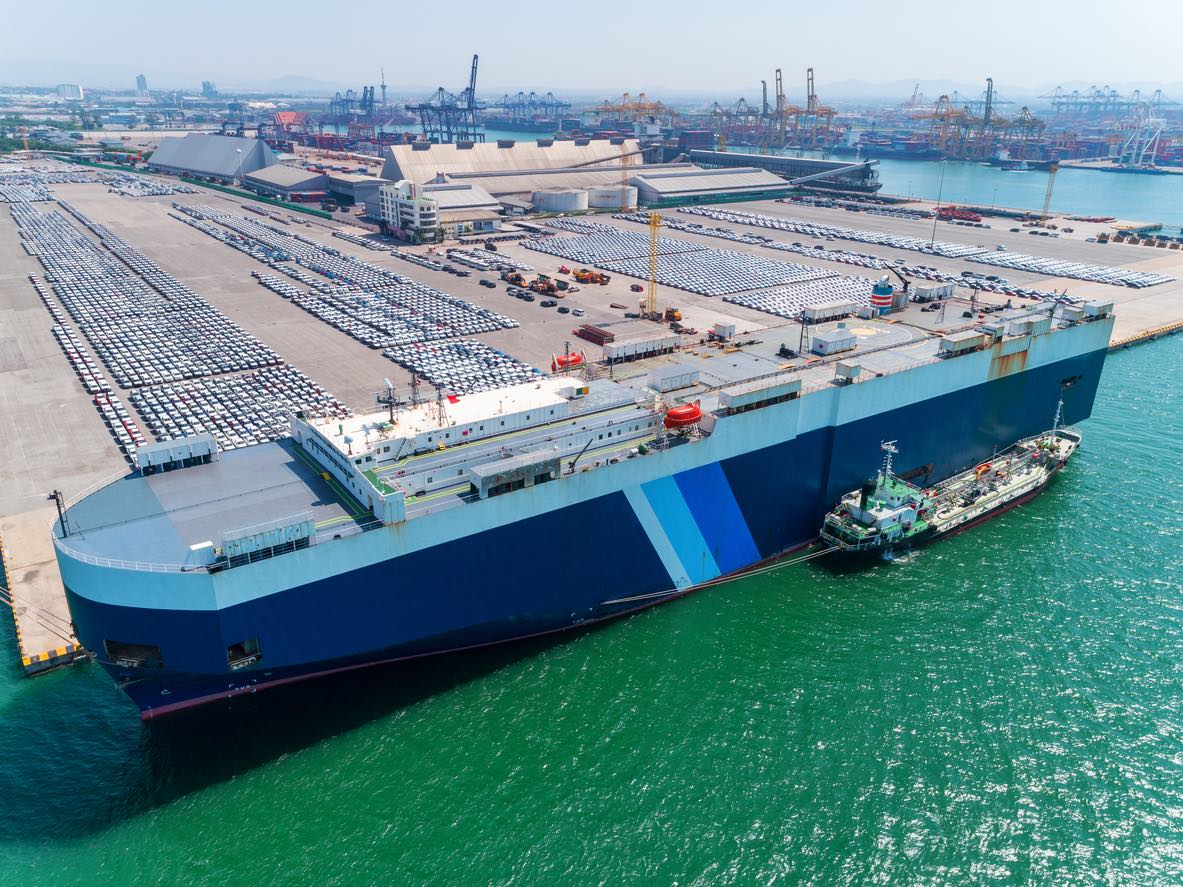Automobile shipping is the process of transporting vehicles from one location to another. This process has become an essential part of modern society, as it enables the movement of vehicles across vast distances, whether for commercial or personal purposes. It has transformed the way we travel, transports goods, and connect with each other.
In modern times, automobile shipping has become increasingly important due to the growth of the automotive industry, global trade, and the expansion of e-commerce. This industry is responsible for moving millions of vehicles every year, making it a multi-billion dollar industry that has transformed the world of transportation.

However, the history of automobile shipping is long and complex, dating back to the invention of the first automobiles. Early automobile manufacturers quickly realized that they needed to find a way to transport their products to customers in different regions, leading to the emergence of the automobile shipping industry.
The earliest methods of automobile shipping were simple and involved driving the cars to their destination or using railroads to transport them. However, as the automotive industry continued to grow and evolve, so did the methods used to transport vehicles. The invention of the automobile carrier, which could transport multiple cars at once, was a major breakthrough that allowed for the mass transportation of vehicles across regions.
Throughout history, automobile shipping has played a crucial role in connecting people, goods, and cultures across vast distances. The ability to transport vehicles across different regions has enabled businesses to expand and people to travel with ease. Without automobile shipping, the modern world as we know it would be vastly different.
The importance of automobile shipping cannot be overstated. It has become an essential part of modern society, enabling the movement of vehicles across vast distances and transforming the way we travel and transport goods. As the automotive industry continues to evolve, so will the methods used to transport vehicles, and automobile shipping will remain an essential part of our global economy.

Transportation has been a fundamental part of human civilization for thousands of years. From the earliest forms of travel, such as walking and riding animals, to the modern-day modes of transportation like cars, planes, and trains, it has been integral in the development and advancement of society.
Throughout history, transportation has been a catalyst for exploration, trade, and communication between different cultures and nations. It has allowed people to travel and trade goods over vast distances, connecting the world in ways that were once unimaginable.
Some of the key inventions and innovations in transportation include the wheel, which revolutionized the way people transported goods, and the invention of the steam engine, which enabled the development of railways and steamships. The invention of the automobile, the airplane, and the rocket-propelled humanity into new eras of transportation, and transformed the way we travel, communicate, and explore the world.
Throughout history, there have been notable figures and companies that have played a significant role in shaping the transportation industry. Henry Ford, for example, is known for revolutionizing the automobile industry with the invention of the assembly line, which allowed for the mass production of vehicles. The Wright brothers are known for their invention of the airplane, which revolutionized air travel and transformed the world.
The impact of transportation on society cannot be overstated. It has enabled the movement of goods and people across vast distances, connecting people and cultures from around the world. It has enabled the expansion of businesses and facilitated the growth of global trade. It has also had significant environmental impacts, such as air pollution and greenhouse gas emissions, which have led to efforts to develop more sustainable modes of transportation.
The history of transportation is a fascinating and complex subject that has shaped the world we live in today. From the earliest forms of transportation to the modern-day modes of travel, it has had a profound impact on society and will continue to do so for generations to come.
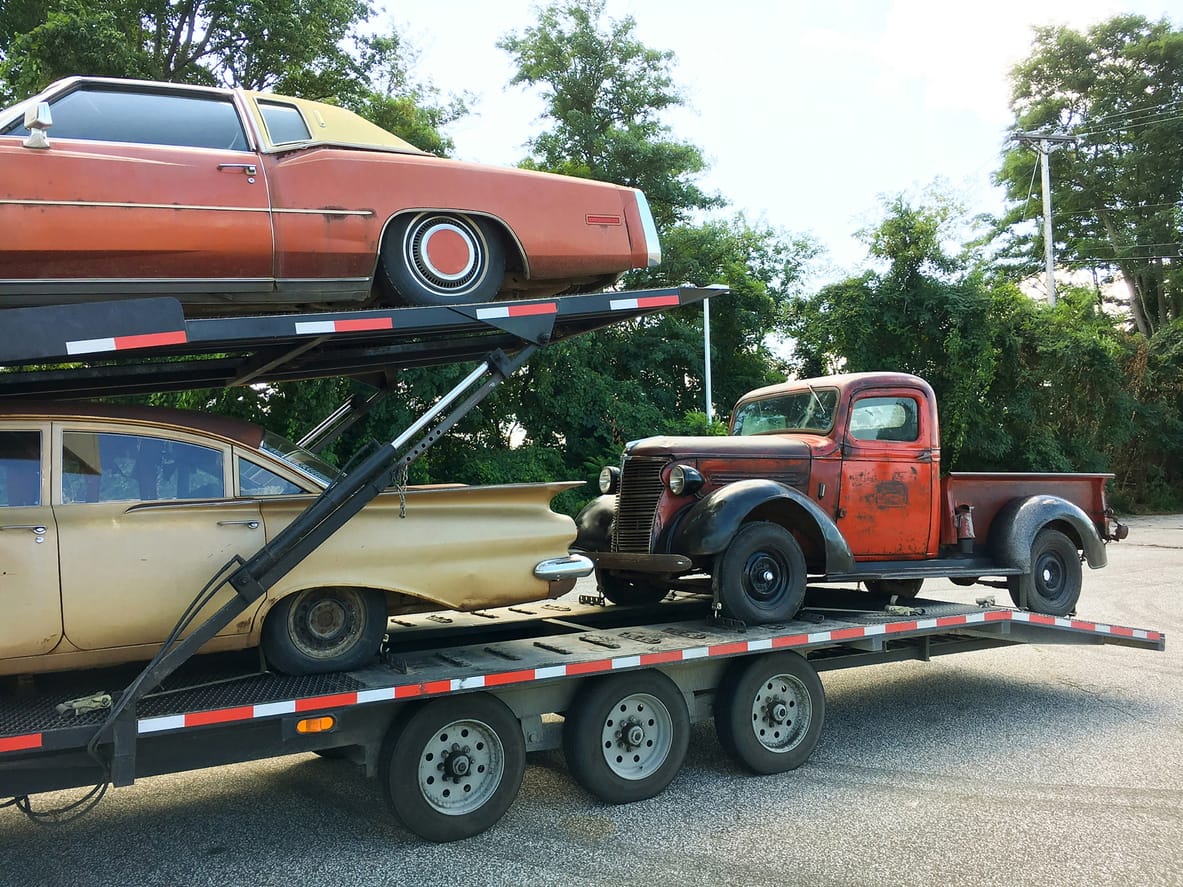
The first automobile, as we know it today, is a result of centuries of innovation and experimentation. While there were various attempts at creating self-propelled vehicles throughout history, the first successful automobile emerged in the late 19th century.
The origins of the automobile can be traced back to the invention of the steam engine in the early 18th century. The steam engine was initially used to power stationary machinery, but inventors soon realized its potential for powering vehicles as well. One of the first steam-powered vehicles was created by Nicolas-Joseph Cugnot in 1769, which was used to transport artillery for the French army.
However, it was not until the mid-19th century that the development of the internal combustion engine, along with the availability of more lightweight materials, enabled the creation of the first gasoline-powered automobile. The first successful gasoline-powered automobile was created by Karl Benz in 1885, who founded the Mercedes-Benz company.
Other notable figures involved in the creation of the first automobiles include Gottlieb Daimler, who created the first high-speed gasoline engine in 1883, and Henry Ford, who developed the first assembly line for automobile production in 1913.
The significance of the first automobile lies not only in its invention, but in the impact it had on society. The automobile revolutionized transportation, making it faster, more efficient, and accessible to the masses. It transformed the way people lived, worked, and travelled, leading to the development of new industries and the expansion of trade and commerce.
In addition, the invention of the automobile also had significant environmental and social impacts. It contributed to air pollution and traffic congestion in urban areas, leading to the development of new transportation policies and regulations.
The first automobile was a revolutionary invention that transformed society in countless ways. Its creation was the result of centuries of innovation and experimentation, and it has continued to evolve and shape the world we live in today.
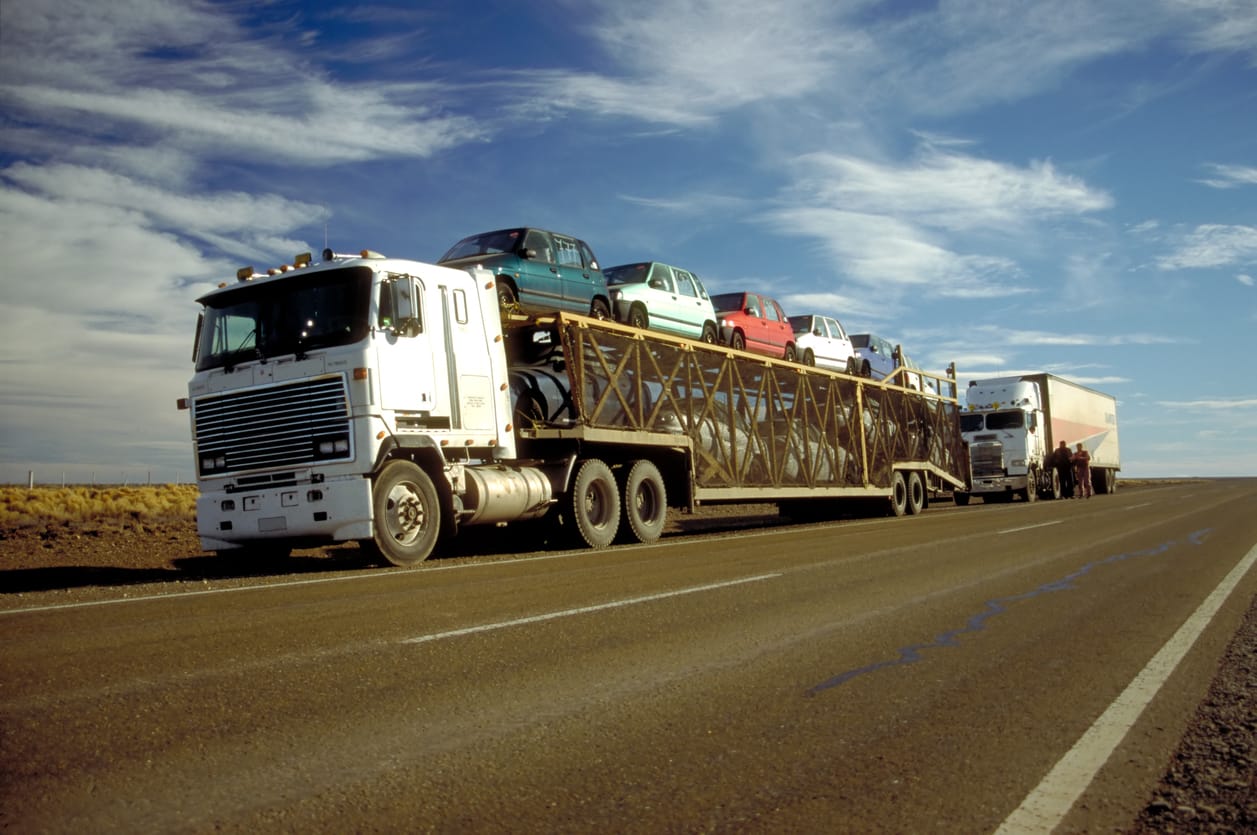
The formation of the auto shipping industry was a result of several events that occurred in the late 19th and early 20th centuries. The growth of the automobile industry, the expansion of car manufacturing across regions, and the need for transportation of cars all played a crucial role in the formation of this industry.
The growth of the automobile industry began in the late 19th century, with the creation of the first gasoline-powered automobiles. This led to the formation of several automobile companies, which in turn led to an increase in demand for automobiles. As the popularity of automobiles grew, so did the need for transportation of cars across regions.
The expansion of car manufacturing across regions also played a crucial role in the formation of the auto shipping industry. With the growth of the automobile industry, automobile manufacturers began to set up production facilities in different regions to cater to the growing demand. This led to the need for transportation of cars from the manufacturing plants to the dealerships.
The need for the transportation of cars led to the development of innovations in transportation technology. In the early days, automobiles were transported using horse-drawn carriages or flatbed railcars. However, as the demand for transportation of cars increased, new methods of transportation were developed.
One such innovation was the creation of the auto carrier truck, which allowed for the transportation of multiple cars at once. The first auto carrier truck was created by Alexander Winton in 1898. This invention led to the development of the auto shipping industry, as companies began to specialize in the transportation of cars using these trucks.
Another innovation was the creation of bi-level and tri-level auto transport carriers, which allowed for even more efficient transportation of cars. These carriers could transport up to 12 cars at once, greatly reducing transportation costs.
The formation of the auto shipping industry was a result of the growth of the automobile industry, the expansion of car manufacturing across regions, and the need for the transportation of cars.
Innovations in transportation technology, such as the auto carrier truck and bi-level and tri-level auto transport carriers, also played a crucial role in the formation of this industry. Today, the auto shipping industry is a vital part of the global transportation industry, transporting millions of cars every year.

The early days of automobile shipping were marked by a series of challenges that early automobile shippers had to overcome. With the rapid expansion of the automobile industry, the need for transportation of cars grew, leading to the birth of automobile shipping.
At the outset, automobile shipping was a daunting task. There were no standardized procedures for the transportation of cars, and most vehicles were shipped on rail cars or driven across long distances by drivers. This approach was not only expensive, but it was also time-consuming, and the risk of damage to the cars was high.
The introduction of the automobile carrier in the 1920s revolutionized the industry, and paved the way for a more efficient and reliable means of transportation for vehicles. These carriers allowed for the transportation of multiple vehicles at a time, and provided a safer and more secure mode of transportation.
One of the key figures in the early days of automobile shipping was Alexander Winston. Winston built the first semi-truck in 1898, which was the precursor to the modern-day auto haulier. He went on to produce these trucks commercially, and they quickly gained popularity due to their ability to transport vehicles more efficiently and quickly.
Winston’s early auto hauliers were simple in design and lacked many of the advanced features found in modern-day auto hauliers. However, they were still a significant improvement over previous modes of transportation and played a crucial role in the development of the automobile shipping industry.
Despite the innovation brought about by Winston’s semi-trucks and the introduction of the automobile carrier, the early days of automobile shipping were still fraught with challenges. The roads were often in poor condition, making transportation difficult, and the technology used in early auto hauliers was not advanced enough to guarantee the safe transportation of vehicles.
So, the early days of automobile shipping were marked by significant challenges that were overcome through innovation and perseverance. The development of the automobile carrier and the introduction of the semi-truck paved the way for a more efficient and reliable means of transportation for vehicles, and Alexander Winston played a crucial role in the development of the industry.

State-to-state auto shipping, also known as interstate auto shipping, refers to the transportation of vehicles between different states. This type of auto shipping has a rich history that dates back to the early days of automobile transportation.
As the popularity of cars increased, so did the need for a more efficient means of transporting them. The development of interstate highways in the United States in the 1950s made it easier for people to travel long distances by car. However, shipping a car between states was still a challenge.
One of the earliest examples of state-to-state auto shipping was the transportation of vehicles by train. In the early 1900s, cars were transported on flatbed rail cars between different regions of the country. This was a relatively slow and expensive process, as rail cars had to be loaded and unloaded manually.
With the advent of the automobile carrier in the 1920s, the process of transporting cars became faster and more efficient. Automobile carriers were specially designed trucks that could transport multiple cars at once. They had ramps and hydraulic lifts that made it easier to load and unload vehicles.
The popularity of automobile carriers grew in the 1950s and 1960s as more people began to travel long distances by car. At this time, there were only a few major highways connecting different regions of the country, so shipping a car by the carrier was often the most efficient way to transport it.
Today, state-to-state auto shipping is a thriving industry, with many companies specializing in the transportation of vehicles between different regions of the country. Some of the most popular state-to-state auto shipping routes include the East Coast to West Coast route, the Northeast to Florida route, and the Midwest to West Coast route.
The cost of state-to-state auto shipping can vary depending on several factors. The distance between the pickup and delivery locations, the type of vehicle being transported, and the time of year can all impact the cost. In general, it is more expensive to ship a car during peak travel seasons, such as the summer months.
State-to-state auto shipping has a rich history that has evolved alongside the development of the automobile industry. From the early days of transporting cars by train to the modern automobile carrier, this industry has played an important role in making it easier for people to transport their vehicles across the country.
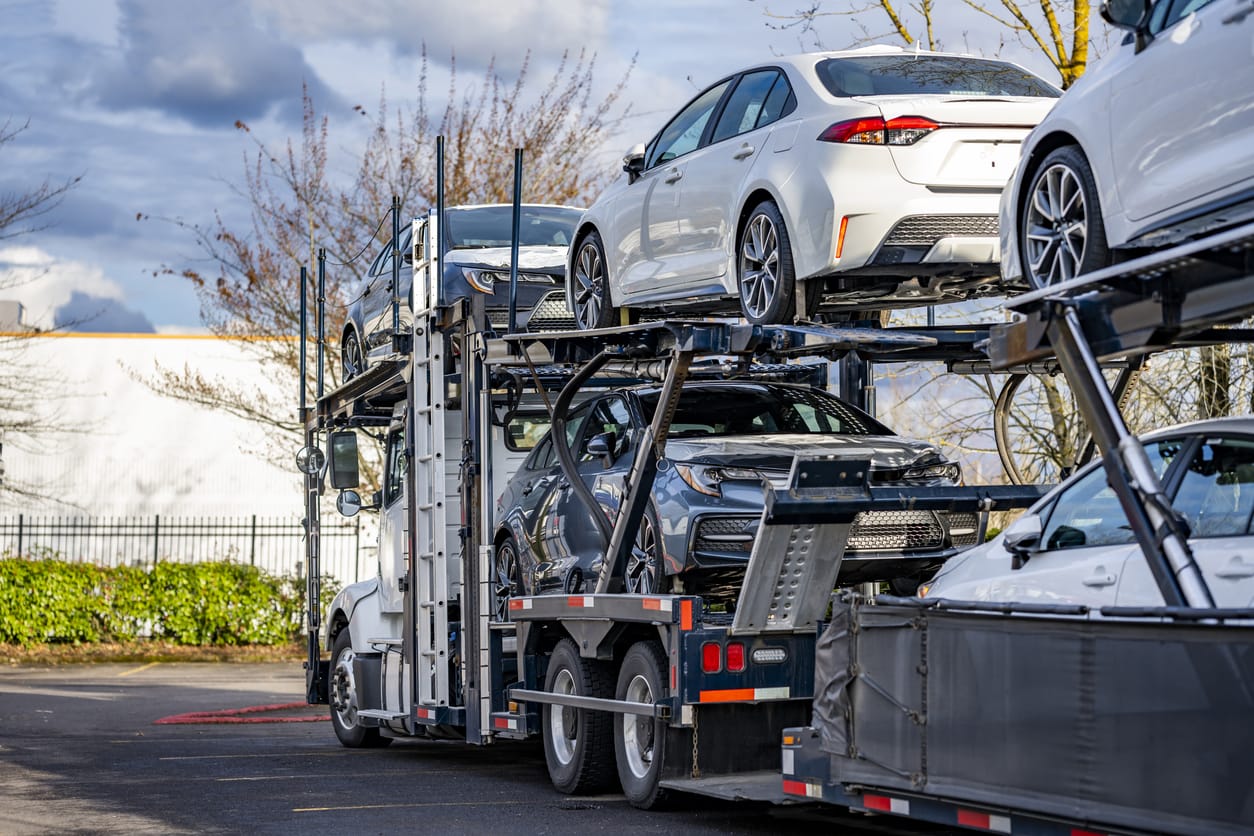
The auto shipping industry has come a long way since its inception, and it continues to evolve to this day. Let’s take a closer look at the current state of the industry, its key players, the types of services available, and some of the trends and challenges it faces.
The auto shipping industry is a multi-billion dollar industry that moves millions of vehicles every year. It is an essential service for many people who need to transport their cars from one location to another. The industry has seen steady growth over the past few years, with an increasing number of companies entering the market to meet the growing demand for auto shipping services.
There are many players in the auto shipping industry, from small, independent operators to large, multinational corporations. Some of the key players in the industry include:
- Brokers: Brokers are companies that act as intermediaries between customers and carriers. They help customers find the right carrier for their needs and negotiate the best possible price.
- Carriers: Carriers are companies that physically transport the vehicles. They have the equipment, drivers, and expertise to move cars safely and efficiently.
- Dealerships: Car dealerships are also a significant player in the auto shipping industry. They often use shipping services to move vehicles between dealerships or to customers.

There are several types of auto shipping services available to customers, depending on their needs and preferences. These include:
- Open Transport: Open transport is the most common type of auto shipping service. It involves loading vehicles onto an open trailer and transporting them to their destination.
- Enclosed Transport: Enclosed transport is a more expensive option that involves loading vehicles onto an enclosed trailer to protect them from the elements during transit.
- Cargo Transport: Cargo transport is a specialized service that is used to transport heavy vehicles, such as construction equipment and oversized trucks.
- Air Shipping: Air shipping is a fast and expensive option that is often used for high-value vehicles or for customers who need their cars delivered quickly.
The auto shipping industry faces several challenges and trends that are shaping its future. One of the most significant trends in the industry is the increasing demand for electric and hybrid vehicles. As more people switch to electric and hybrid vehicles, auto shipping companies will need to adapt their equipment and processes to handle these vehicles.
Another challenge in the industry is the shortage of qualified drivers. As the demand for auto shipping services grows, carriers are struggling to find enough drivers to meet the demand. This shortage has led to increased competition for drivers, higher wages, and a need for carriers to invest in training and retaining their drivers.
Apparently, the auto shipping industry has come a long way since its early days, and it continues to evolve to meet the needs of its customers. With an increasing demand for auto shipping services, the industry will need to continue to adapt and innovate to meet the challenges and trends of the future.
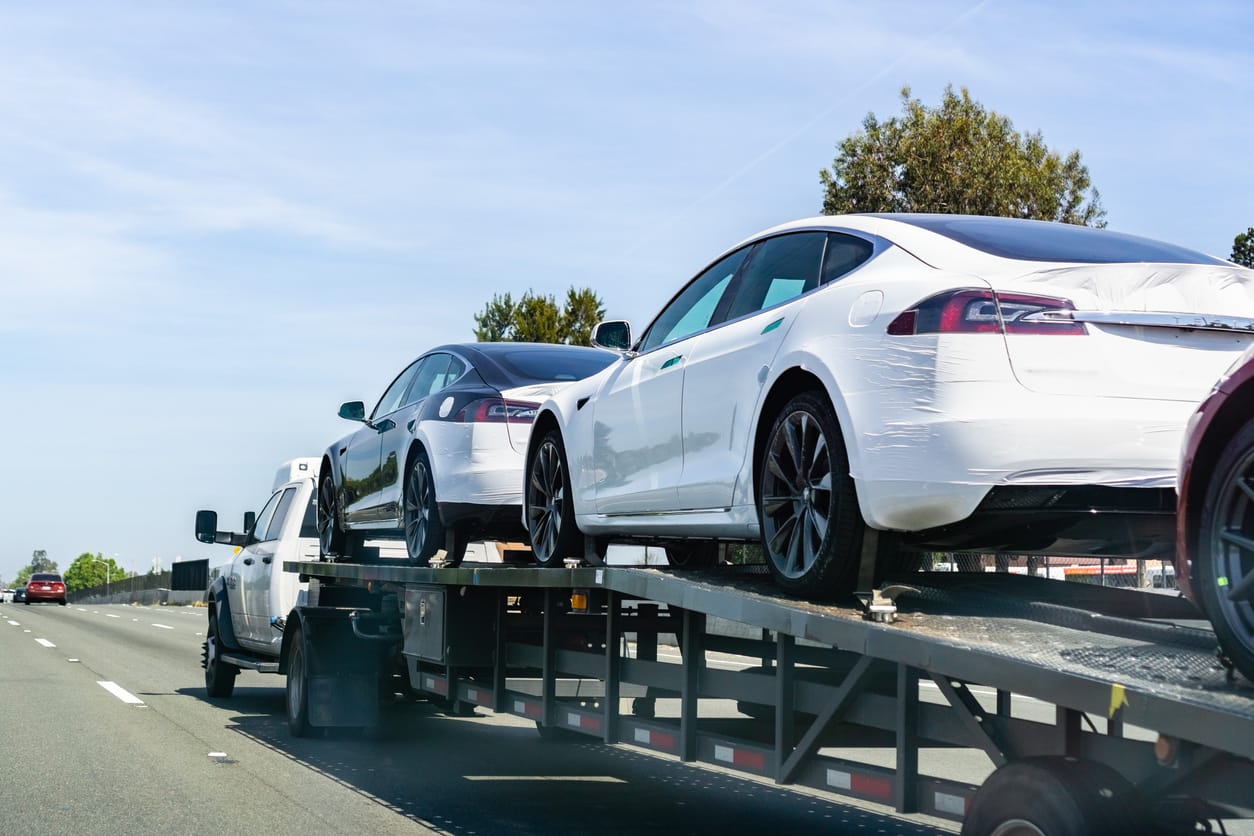
When it comes to shipping cars today, the industry has come a long way since the early days. Technological advancements have revolutionized the process, making it more efficient and environmentally friendly. Let’s take a closer look at modern-day automobile shipping practices and methods.
Firstly, one of the biggest changes in modern-day automobile shipping is the increased use of technology. GPS tracking, for example, has made it possible to monitor the location of vehicles in real time, ensuring timely and safe delivery. Automated systems for loading and unloading cars have also streamlined the process, reducing the time it takes to load and unload cars onto and off carriers.
Another technological advancement in automobile shipping is the use of electronic documentation. This eliminates the need for physical paperwork and reduces the risk of errors or lost paperwork. Instead, all information is stored electronically, making it easily accessible and organized.
In addition to technological advancements, modern-day automobile shipping also puts a greater emphasis on environmental sustainability. Electric and hybrid car carriers are becoming more common, reducing carbon emissions and helping to minimize the industry’s impact on the environment. Some companies are also exploring the use of biofuels and other renewable energy sources to power their carriers.
Despite these advancements, there are still challenges that the industry faces. The shortage of truck drivers, for example, has made it difficult for carriers to find enough qualified drivers to meet the growing demand for automobile shipping. Additionally, fluctuations in fuel prices and increased regulations can also impact the cost of shipping cars.
Interestingly, modern-day automobile shipping is an impressive feat of logistics and technology. The industry has made great strides in recent years, improving efficiency, reducing environmental impact, and adapting to new challenges. As technology continues to evolve, we can expect even more innovations and advancements in the world of automobile shipping.
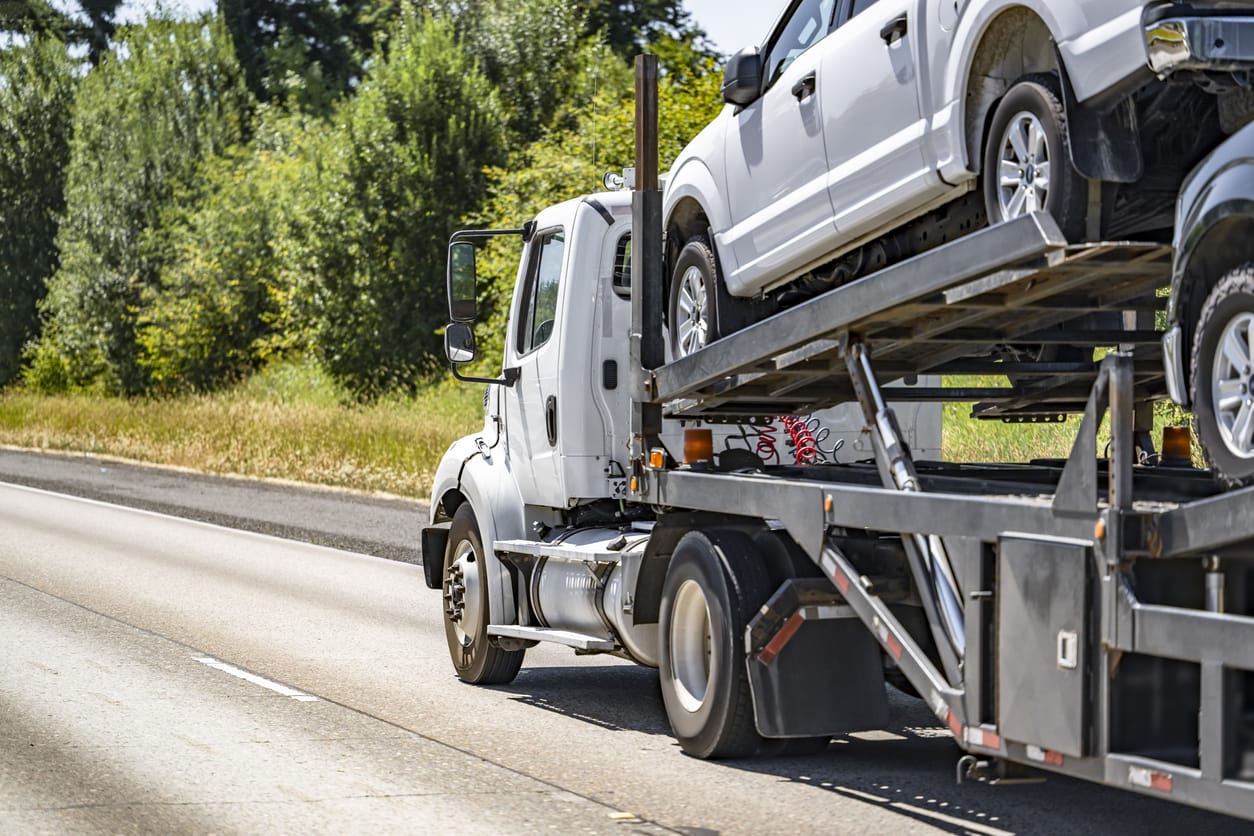
The invention of the automobile brought with it a revolution in the way we live and do business. With the advent of mass production and advancements in technology, cars have become more affordable and accessible than ever before. However, the impact of the automobile industry goes far beyond the individual car owner.
- Globalization: Automobile shipping has played a significant role in the globalization of the automotive industry. Cars are now produced in one country and shipped all over the world, allowing consumers to have access to a wide range of vehicles from different countries.
- Economic growth: The auto shipping industry has contributed to the growth of the economy in many ways. It has created jobs, increased trade, and stimulated the production of vehicles and related industries.
- Accessibility: Automobile shipping has made it easier for people to move around and access different regions. It has also made it easier for people to relocate to new places without worrying about how to transport their vehicles.
- Mobility: The ability to ship vehicles has increased mobility and independence for people who need to move around frequently. It has also enabled businesses to transport their vehicles to different locations, which has increased their efficiency and productivity.
- Environmental impact: While automobile shipping has many benefits, it also has negative environmental impacts. It contributes to carbon emissions and pollution from transport vehicles, and it also requires a significant amount of energy to operate.
- Innovation: The challenges faced by the auto shipping industry have led to innovations in technology and transportation methods. This has resulted in the development of more efficient and eco-friendly methods of shipping vehicles, such as electric and hybrid transport vehicles.
The impact of automobile shipping on society has been immense. It has contributed to the growth of the economy, enabled the movement of goods and services, and played a significant role in the growth of various industries. However, it has also had its negative impacts, particularly on the environment. As the industry continues to evolve, we must find ways to mitigate its negative impacts while harnessing its benefits to continue to move society forward.

As technology continues to advance, the future of automobile shipping is likely to see significant changes and innovations. Here are some potential developments to expect:
- Electric and autonomous vehicles: With the increasing popularity of electric and autonomous vehicles, these vehicles will likely become a common sight on the roads. This will lead to changes in the way automobiles are shipped, as electric and autonomous vehicles may require different transportation methods.
- Improved safety measures: As safety concerns continue to be a priority for the automotive industry, automobile shipping companies will likely implement new safety measures to protect both the vehicles and the drivers. This may include the use of advanced tracking technologies and real-time monitoring systems.
- Environmental concerns: The impact of automobile shipping on the environment has become a pressing issue, and companies are likely to seek ways to reduce their carbon footprint. This may include the use of alternative fuel sources or the implementation of more eco-friendly transportation methods.
- Integration of technology: The use of technology in automobile shipping is likely to increase, with more companies adopting advanced systems for tracking, communication, and logistics. This will help to improve efficiency and reduce costs.
However, some challenges may arise in the future of automobile shipping. These include:
- Regulation and compliance: As the industry evolves, regulations may need to be updated to address new challenges and ensure safety standards are met.
- Cost considerations: As the cost of shipping continues to rise, companies may need to explore new ways to reduce costs while maintaining quality service.
- Infrastructure: As the demand for automobile shipping increases, there may be a need for investment in new infrastructure to support the industry.
It is certain automobile shipping will play a significant role in the development of autonomous vehicles. The ability to safely and efficiently transport these vehicles will be essential to their success, and automobile shipping companies will play a key role in making this happen.
The future of automobile shipping is likely to see significant changes and innovations as technology continues to advance. While there are challenges that may arise, the industry is well-positioned to adapt and thrive in the years ahead.

Throughout history, transportation has been a vital component of society’s progress. From the invention of the wheel to the advent of the automobile, transportation has constantly evolved to meet the needs of the times. Automobile shipping is a crucial aspect of the transportation industry, allowing people to move their vehicles across long distances with ease.
In this article, we delved into the history of automobile shipping, exploring its origins and how it has evolved over time. We examined the challenges faced by early automobile shippers and how the industry has grown and adapted to meet the needs of modern times.
The impact of automobile shipping on society cannot be overstated. It has played a significant role in the development of the global economy and has allowed for greater globalization. The rise of the automobile industry and the need for the transportation of vehicles have given birth to the auto shipping industry, which has become an integral part of the automotive industry.
Looking to the future, we can expect to see further advancements in automobile shipping technology, including the development of autonomous vehicle transport. However, this will also bring new challenges, including issues around safety and regulation.
In conclusion, automobile shipping has a rich and fascinating history, and its importance in modern times cannot be overstated. As the industry continues to evolve and adapt, it will undoubtedly play a crucial role in the development of the transportation industry and society as a whole.
A: Automobile shipping refers to the process of transporting vehicles from one location to another using various modes of transportation.
A: The transportation of automobiles dates back to the early 20th century when the first automobiles were being produced and needed to be shipped to dealerships and buyers.
A: Initially, automobiles were shipped using railroads, which were the primary mode of transportation for long-distance shipping at the time. Later, trucks were introduced as a means of shipping vehicles over shorter distances.
A: Alexander Winston is credited with inventing the first automobile carrier, which was designed to transport vehicles long distances by rail.
A: Automobile shipping has had a significant impact on society by facilitating the growth of the automotive industry, allowing for the distribution of vehicles to different regions, and supporting the economy by providing jobs and contributing to the transportation sector.
A: Some challenges facing the automobile shipping industry today include increasing fuel costs, regulatory changes, and competition from other transportation modes. There is also a growing need for sustainable and environmentally-friendly shipping methods.
A: The future of automobile shipping is likely to see continued innovation and technological advancements, such as the use of autonomous vehicles for transportation. There may also be a shift towards more sustainable shipping methods to reduce the industry’s carbon footprint.
- The first automobile shipment occurred in 1899 from Detroit to New York City.
- The growth of the automobile industry led to the need for automobile shipping.
- The introduction of the automobile carrier in the 1920s revolutionized automobile shipping.
- Alexander Winston developed the first auto hauler in 1951.
- State to state auto shipping has been around since the 1950s.
- The auto shipping industry has evolved with technological advancements, such as GPS tracking and online booking systems.
- Automobile shipping has played a significant role in the globalization of the automotive industry.
- The environmental impact of automobile shipping is a growing concern for the industry.
- The future of automobile shipping may involve autonomous vehicle transportation.



